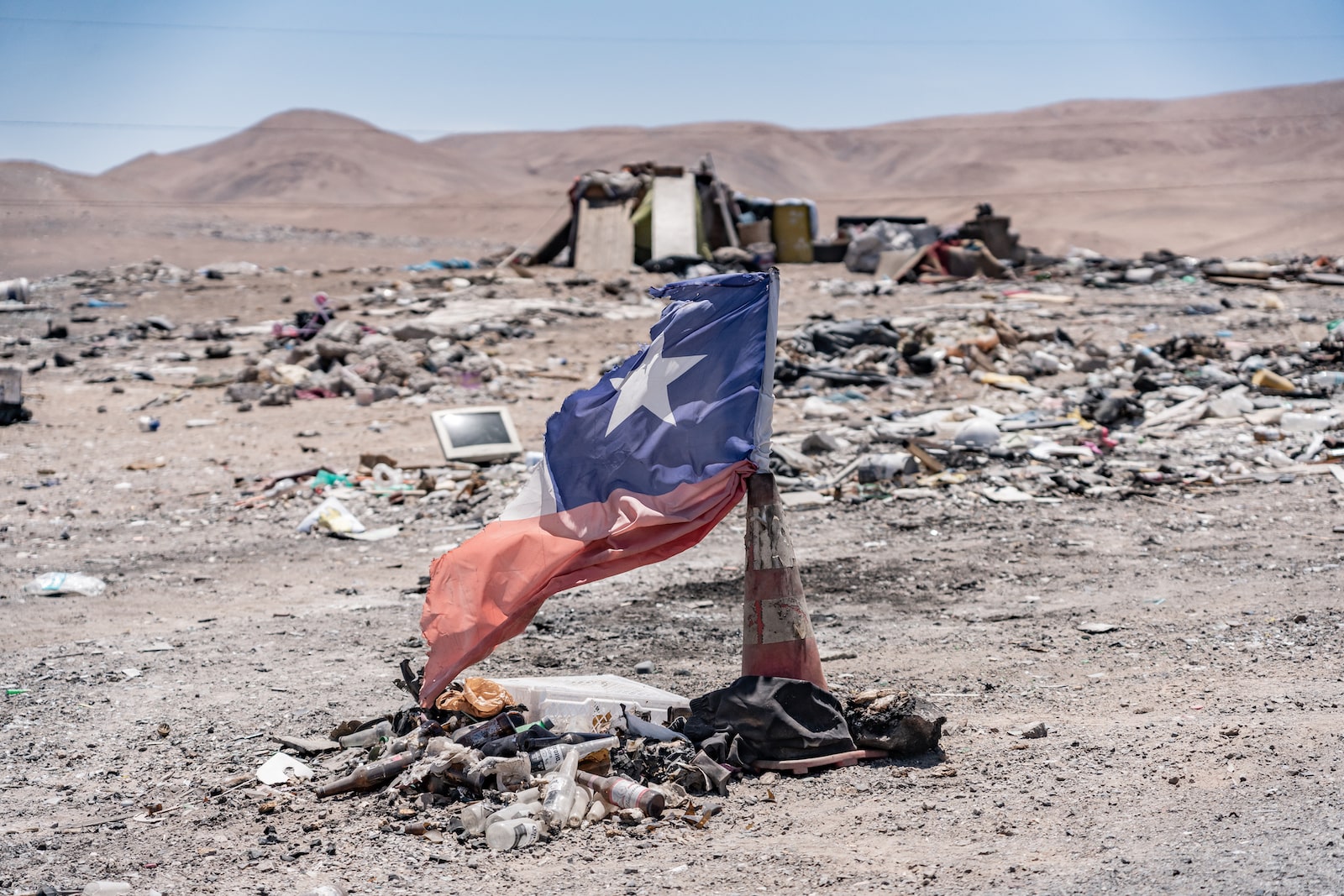This story was produced by Grist and co-published with El País. A Spanish-language version can be read here. Reporting was supported by the Joan Konner Program in the Journalism of Ideas.
On the morning of June 12, 2022, Ángela Astudillo, then a law student in her mid-20s, grabbed her water bottle and hopped into her red Nissan Juke. The co-founder of Dress Desert, or Desierto Vestido, a textile recycling advocacy nonprofit, and the daughter of tree farmers, Astudillo lives in a gated apartment complex in Alto Hospicio, a dusty city at the edge of the Atacama Desert in northern Chile, with her husband, daughter, bunny, and three aquatic turtles.
Exiting the compound, Astudillo pinched the wheel, pulled over next to a car on the side of the road, and greeted Bárbara Pino, a fashion professor, and three of her students, who were waiting inside.
They headed toward a mountain of sand known as El Paso de la Mula. Less than a mile from her home, squinting into the distance, Astudillo saw a thread of smoke rising from its direction. With her in the lead, the two vehicles caravanned toward the dune, the site of the second-largest clothes pile in the world.
As they got closer to El Paso de La Mula, the thin trail of smoke had expanded into a huge black cloud. Astudillo stopped the car and texted the academics behind her.
It looks like it’s on fire. Hopefully, it’s not there. 🙁 🙁 🙁
She then dialed them directly and asked, “Do you still want to go?”

…click on the above link to read the rest of the article…